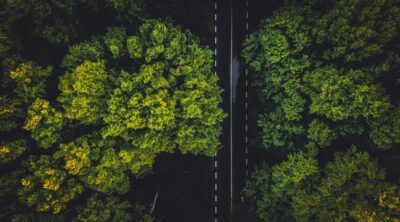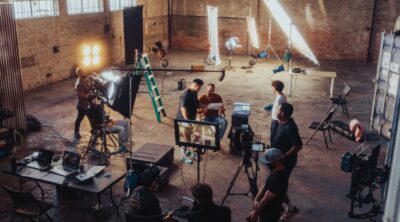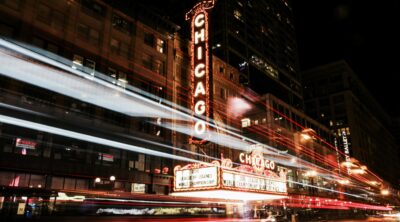< Back to all posts
10 Tips for Shooting Video in Tokyo
Tokyo is Japan’s bustling capital city with a mixture of ultramodern and traditional attractions. This city has unlimited options for entertainment, shopping and a unique culture. With iconic buildings, temples and delicious food, Tokyo has much to offer any traveling producer. But what do you need to know before heading all the way over to Japan? We talked to DP David Allen, about the top 10 tips for shooting corporate video in Tokyo.
1.Local Fixer: It is highly recommended you hire a local fixer/producer, and at least one bilingual PA. “There are many nuances to Japanese culture that foreign crews are not aware of, and local fixers can help bridge the gap,” Allen said. Everything from location permits to etiquette in different shooting scenarios are taken care of by the fixer. When foreign crews are working alone, often times they break rules or laws without realizing, which could jeopardize the shoot. Always get a fixer!
2. Customs: There are many customs and rules to abide by while in Japan. “No means no,” Allen said. “Japanese people are typically rule-abiding and won’t bow to pressure (no pun intended)”. They also do not accept offers for payment or bribes to persuade them. Allen recommends you bring small gifts from your native country to interviewees or the local crew. It is highly appreciated and common practice among Japanese to give ‘omiyage’. Lastly, wear shoes that are easy to slip on/off because many indoor locations and offices require you to take off your shoes at the entrance.
3. Language: Although they are capable, many people are uncomfortable speaking English. We recommend you brush up on your Japanese and practice some basic phrases before your trip. This is yet another instance where you will be glad you have a fixer with you, so things don’t get ‘lost in translation’.

4. Permits: The only time you’ll need a permit is for parks, any private property, temples, shrines, and such. You can shoot on any sidewalk in the city without a permit, but you can’t set up a tripod. Also, be advised to not operate any drones while in Tokyo. “You’ll probably get arrested,” Allen said. “Outside of major cities is fine, but always best to check with your local producer first.” For more information on obtaining a filming permit, click here.
5. Equipment Rentals: A local producer/fixer can also help with equipment rentals if needed. “Japan rental houses are known for being strict and often times will refuse to rent to foreigners,” Allen said. “Local producers already have established relationships with these rental houses and can coordinate rentals in Japan to avoid importing gear.” There are a few foreigner-owned rental houses such as equip.tokyo that can supply smaller productions with cameras and lenses.
6. B-roll: Tokyo is known for its drastic juxtaposition in architecture. With a modern revamp after destruction from WWII, Tokyo architecture is known for its strong emphasis on steel, concrete and funky shapes. More traditional locations to capture some b-roll and establishing shots are the Imperial Place, Senso-ji, and Meiji Jingu. Just make sure you have the correct filming permit first! For a more modern feel of the city, we recommend you get some shots of Tokyo Tower and Tokyo Skytree. All of these iconic landmarks draw many people to them everyday, so don’t miss your chance to also capture some b-roll of locals and tourists enjoying the sights.
7. Transportation: Depending on the size of your shoot, usually the best way to move around town is hiring a driver with a Hi Ace. If you’re a one man band, taxis are everywhere and a safe bet. The train is always punctual but can be very busy throughout the day, so we wouldn’t recommend this for travel within Tokyo if you have gear with you. Uber is available but is very limited and expensive. Traffic is never too bad, even during rush hour. Travel times increase during these times, but not significantly.
8. Parking: Parking is easy to find in Tokyo but can be very expensive, especially if you’re shooting in a busy central area. “If you hire a driver, and he/she can wait in the car, you can avoid parking fees by having them park on the side of the road with their hazards on,” Allen said.

9. Weather: Weather in Tokyo is mild with 4 seasons throughout the year. June-July is notorious for being the rainy season, and August-early September is very hot and muggy. The best months to shoot in Japan are October-November and March-May.
10. Cuisine: What would a trip to Japan be without delighting in some traditional Japanese cuisine? The most famous foods to come from Japan are, of course, sushi, sashimi, tempura, miso soup, udon and more. “A fun place to eat is Kaikaya by the Sea, which is an izakaya-style Japanese restaurant in Shibuya,” Allen said.” Great for groups and it has an English menu as well.” You can find more restaurant suggestions here.
Key Takeaways:
- Hire a fixer! Everything from location permits to etiquette in different shooting scenarios are taken care of by the fixer. Having someone there who also speaks English and Japanese will help the shoot go smoothly.
- It’s best to leave the drones at home for this trip, or at least check with your local producer and permit office before operating one.
- While visiting Japan, be sure to indulge in some delicious, traditional food!
And if you’re planning an upcoming shoot in Tokyo, you can trust Crews Control to get you the best local crew with the equipment you need. Just click here for a free quote! Don’t forget to follow us on Facebook, Twitter, LinkedIn and Instagram!







Leave a Reply